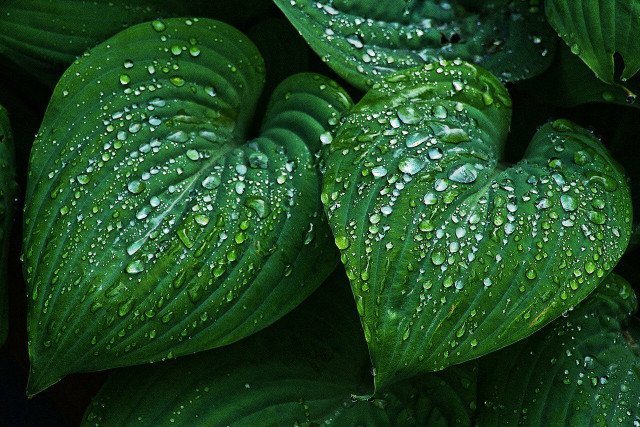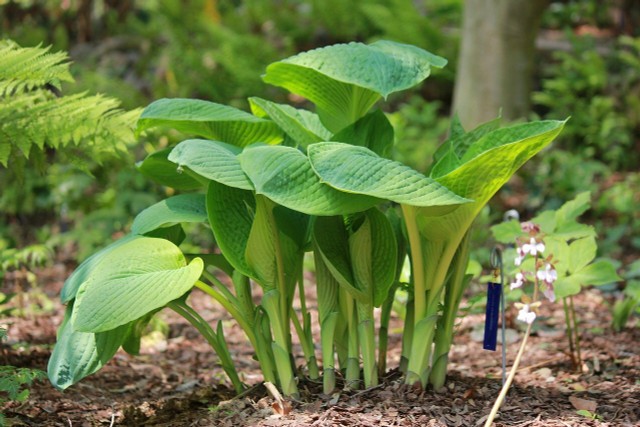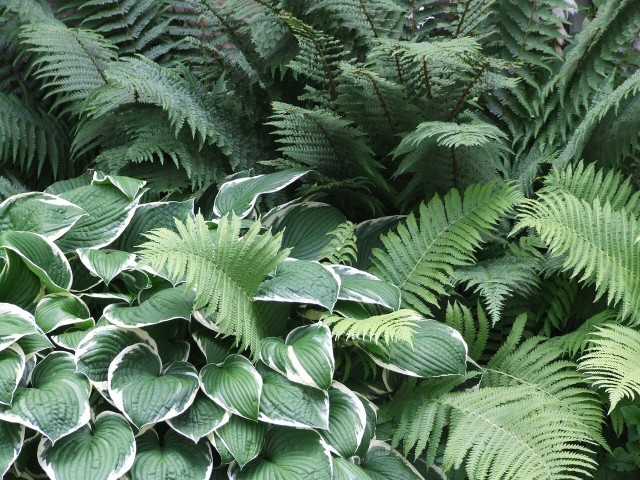
Planting hostas is quick and easy. The Asian heartleaf lilies decorate your garden with leaves and flowers. Here’s how to grow this leafy perennial in your garden.
Hosta is the scientific name for funcias, a genus of plants in the asparagus family (Asparagaceae). This foliage-decorating perennial is originally from Asia. In Japan, as well as in China and Korea, Hosta has been a popular ornamental plant for centuries.
The genus of Hosta includes numerous species that differ in growth and appearance. Thus, the plant genus brings biodiversity and variety to your garden. Hosta can be planted in beds or containers. Pay attention to the growth characteristics of each species.
Contents
The properties of the plant
There are many species of hosta. The growth height of the plants ranges from 20 centimeters to one meter. In order to choose the right hosta plant for your balcony or garden, you should learn about the individual growth characteristics of the hosta species beforehand.
In general, hosta grows rather slowly. That is why the plant is usually a bit more expensive to purchase. It forms thick succulent rhizomes from which large leaves emerge.
Because of its leaf shape, hosta is also called heart lily. The spreading leaves grow in a heart to cleft shape. Some species cast beautiful golden foliage in the fall. The decorative leaves are crisscrossed with graphic veins that give the plant a distinct outline.
Flowering time also varies from species to species. With a flowering time until September, the autumn flower Hosta plantaginea is one of the late bloomers. The bell flowers of the Hosta hang on stems without leaves. The fragrant flowers shine in white and purple.
Note the individual characteristics of the plant to choose the best location.
Planting hosta: The appropriate location

Plant your hosta in a partial shade to shady spot. However, avoid completely dark places that no sunlight can reach. Hosta plants are ideally adapted to partial shade to shady locations with their large leaves. They prefer to live in cool, moist forests, mountainous areas and meadow edges. Hosta is therefore one of the popular plants for so-called shade gardens.
Hosta plantanigea is an exception. This species also likes to grow in sunny, warm places. Only then it forms its lush flowers.
Plant Hosta as a young plant in a tub or directly in a bed. In any case, the soil should be rich in humus. Hosta prefers fresh soil, which means it should always be moist and loose. This allows excess water to drain away. Make sure that the soil is always evenly moist.
Planting hostas: With these tips you will succeed

The right time to plant hosta is from late spring to autumn. The young plants do not like late frost. Therefore, wait until May to be absolutely sure that they will grow well.
Here’s how to plant hostas in a container or bed:
- Dig a hole with a shovel. The hole should be one and a half times the size of the root ball of the young plant.
- Keep the minimum distance from the other plants. The distance varies greatly depending on the species. Therefore, find out in advance exactly how much space your plant needs.
- Place the perennial in the hole with the root facing down.
- Fill the hole with the previously dug soil and press it lightly.
- Water the hosta with water. The soil should be moist and fresh. However, avoid waterlogging.
Tip: Hosta looks especially beautiful in combination with rhododendrons, grasses, ferns and other foliage-decorating perennials.
Care for hosta properly after planting

Hosta is a long-lived and easy to care for perennial. With proper care, the plant will become increasingly lush and beautiful over the years.
- Keep the soil evenly moist and fresh. Water especially hosta plants in containers regularly to prevent water loss through runoff or evaporation through the large leaves.
- The ornamental perennial is hardy. However, you should protect it in case of prolonged frost. Surround the plant with some leaves and brushwood. Place the Hosta in a pot on a protected wall for the winter. In any case, hosta winters outdoors.
- After the winter you can feed the plant with some organic fertilizer. Add the plant food to the soil of the perennial in spring. Young plants in particular will benefit from this.
Note: Hosta is a favorite meal for slugs, making it particularly susceptible to slug damage. Young hosta plants are sometimes among the snails’ favorite food sources. For the sake of the environment, avoid synthetic chemical pesticides or slug pellets. Alternatively, you can build a snail trap yourself.

